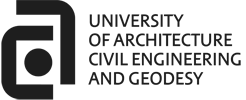Goals and objectives of the subject:
The structure is an essential component of the building. The creativity and imagination of the architect come to reality by adopting of a suitable structural system. The understanding of basic principles and concepts of the structural mechanics is an important part of the architectural education.
The aim of the subject is to narrate fundamental concepts of structural design to architecture students such that they have minimum involvement with math problem-solving. During the classes students learn about different types of loads, forces and vector addition, the concept of equilibrium, internal forces, geometrical and material properties of structural elements and rules of thumb for estimating the proportions of some structural systems such as cables, arches, trusses, beams, columns and frames.
Characteristics of the subject:
This subject introduces the basic methods of structural analysis and the design of simple structures. A feature of this subject is the integration of the design and analytical skills in dealing with contemporary structures that have an effective blending of materials for achieving satisfactory performance and economy in construction.
This subject consolidates basic structural theory and design abilities that underpin further specialised studies in structural design classes during the next semesters.
Acquired knowledge:
- A basic understanding of the behaviour of simple structural elements and systems
- Explain the theory, concepts, principles of structural mechanics
- Calculate support reactions and internal forces of simple trusses, beams and frames
- Design of timber and steel beams and columns
Acquired skills:
- Ability to model a simple structure without detailed instructions
- Critical thinking and judgement of the adopted assumptions and results of the solutions
- Ability to undertake problem identification, formulation, and solution
- Apply the theory to problems of practical interest
- Develop skills in collaborative learning through small-group problem solving and communication
- Capacity for lifelong learning and professional development
Preliminary requirements: None

